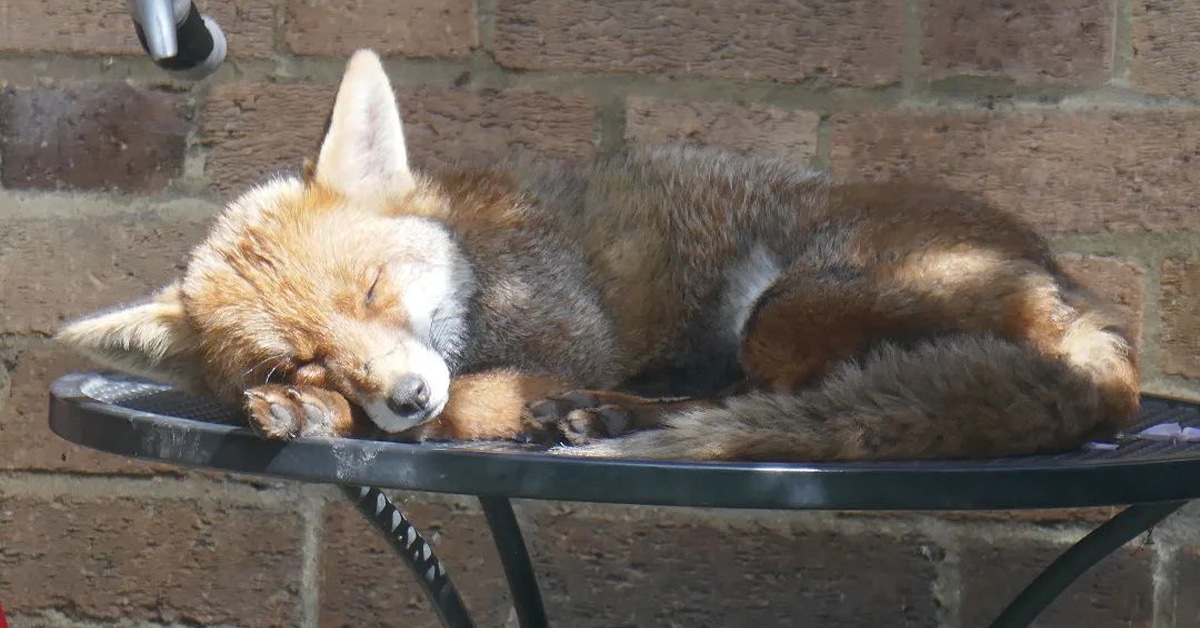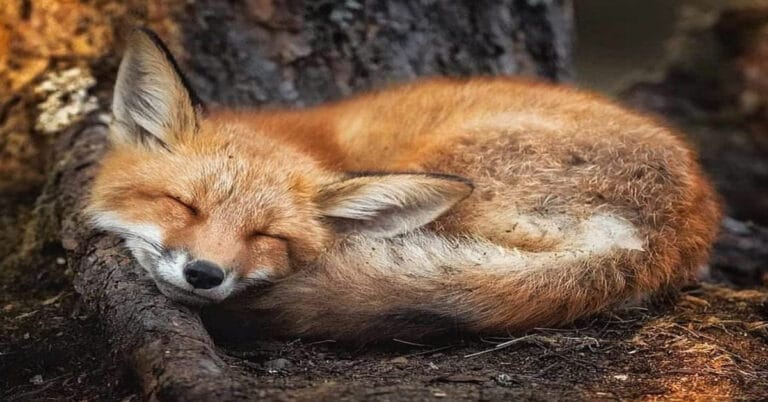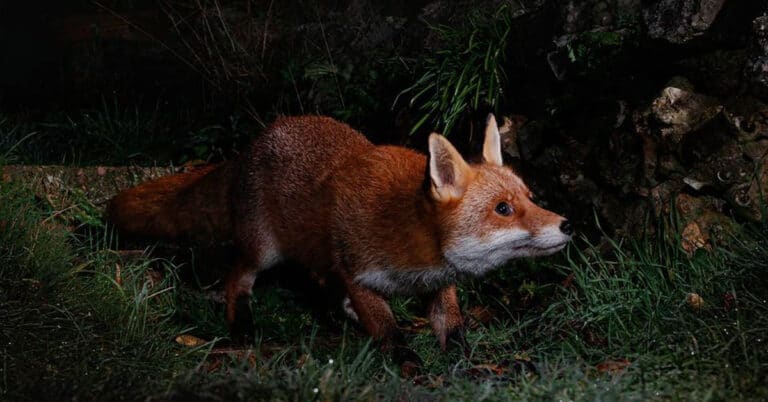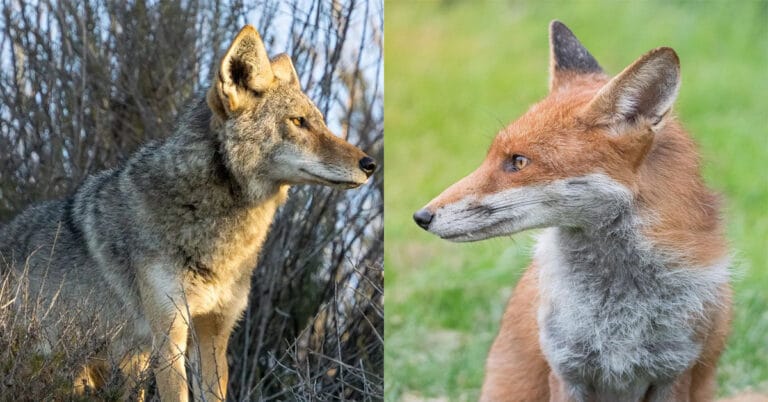Where Do Foxes Sleep?
Foxes are amazing creatures, and they are considered to be quite peculiar animals. They have many unique abilities and habits that leave us amazed. Foxes have been around for as long as humans remember and, therefore, have managed to be a significant part of the cultures of different countries all around the world. Therefore, have you ever wondered where foxes sleep?
Foxes are omnivorous mammals that belong to the family Canidae. Their visual characteristics are a flat skull, a pointy nose, triangle-shaped ears, and a bushy tail. In total, there are 23 species of the fox; however, only 12 of them are referred to as “true foxes”. Foxes have the ability to be very silent and have excellently developed senses. All this makes them great hunters and predators.
It depends on the species. However, in general, foxes tend to have nocturnal behavior, which means that they are most active during the night. During the daytime, they are rarely seen and manage to hide pretty well from humans and predators.
Where Do Foxes Live – Geographical Habitat & Preferences
To explore where do foxes sleep, let’s first discuss their living environment and habitat preferences. Foxes are extremely adaptable creatures, and they can adjust to living in unimaginable conditions. They can be found in forests, mountains, grasslands, deserts, and even in the Arctic regions.
In general, the vast majority of fox species prefer to live in forests, woodlands, and grasslands. This habitat provides a good source of prey and vegetation. This environment is also the cover for them to be hidden and safe from the outer world. Normally, there are plenty of water sources such as rivers and streams.
As strange as it may sound, foxes have managed to adapt to some of the world’s hottest climates. For example, Fennec foxes live in the Sahara desert. There, the temperature can get very high and the water source is very limited. So, foxes that live in that kind of area have to consume the needed amount of moisture from the prey and vegetation. In addition to that, they have large ears, which contribute to the body’s heat dissipation. Desert foxes are forced by nature to spend the day in the shelter and the night out hunting.
The second extreme habitat where the foxes are seen is the Arctic and alpine tundras. Arctic foxes are pretty brave and strong to live in the areas where there are no trees, it’s windy, cold, and snowy. Temperatures can also go as low as 35 degrees Fahrenheit.
Some species can withstand extremely high elevations and can be found in the plateaus and mountains. For example, Tibetan foxes can be found as high as 17, 000 feet. Their habitat mostly consists of many rugged and rocky slopes. This gives them a great opportunity to hunt and provides materials for good dens.
Sleeping Habits of Fox
Where do foxes sleep significantly depends on their sleeping habits. Foxes have very strange behaviors regarding sleeping. As we already mentioned above, the majority of fox species have nocturnal behavior. However, some may also be nocturnal and hunt at dawn or during the day under the influence of different environmental factors. While sleeping, those cute creatures curl up in order to stay warm. This also helps to blend in with the habitat.
Some prefer to be curled up on their left side, and if they are, it is believed that they are sleeping deeply. Several studies that were done on foxes show that the males prefer to lie on the left side. However, females do not have specific preferences. Perhaps where do foxes sleep and how they sleep are manifestations of their dominant behavior? Who knows?
The average length of sleep for foxes is at least 8 hours a day. For example, red foxes generally sleep up to 10 hours a day. During the winter period, they will sleep 12 to 14 hours a day. Foxes tend to wake up several times if they hear other animals or some unfamiliar sounds.
Where Do Foxes Sleep?
The short answer is that foxes can sleep in different places. However, they tend to prefer the bush, tall grass, and dens. They choose places where they won’t be seen by predators.
Fox dens are structures that are pretty unique and have several functions. The burrows can be eight feet deep in the ground with multiple entrances. It consists of tunnels, rooms, entrances, and the main den. Not only do foxes use them for raising babies, but the dens are also used for food storage.
Normally, foxes have several dens and one main home, or “natal den”. During the breeding season, this is where they raise the babies. Generally, those spectacular animals will sleep near the dens or by the den opening. However, males do not sleep there, and only cubs and mothers stay in the den. They leave it when their babies grow up and stay out until the next breeding season.
Fox cubs are born blind and need approximately two weeks to get a sight. Therefore, the presence of their mother is essential. Adult vixens from the previous litter are often seen sleeping in the den alongside their mothers.
However, some foxes sleep in their dens due to environmental conditions. For example, desert foxes, such as Arctic foxes, sleep in their dens to avoid extreme temperatures.
Foxes like to sleep in the open area, preferably covered by bushes, trees, or tall grass. They do not like to be wet and, if it rains, they will even dig the burrow temporarily to sleep there and stay dry. They can also take the burrow that was built by other animals. Even more, when they get tired from hunting, those unique animals will have a rest in random burrows, and these places are known as “fox rests”.
The average fox takes approximately 16 to 20 breaths in a minute. However, we have exceptions in those cases too. The number of breaths in a minute for Fennec foxes in normal conditions can be up to 25. They have managed to develop a coping mechanism against very high temperatures. To stay cool and regulate body temperature, they start panting. During the panting, the breath rate can go up to 690, as unbelievable as it may sound.
There is a popular belief that foxes sleep in the trees. Even though it does not apply to all species, gray foxes can climb trees. They can do it because of their retractable claws. However, it is interesting that even some red foxes have been seen sleeping in the trees.
Where Do Foxes Sleep in the Desert?
Desert foxes are famous for their ability to live in an extremely hot habitat. During the day, the temperature can go up to 100 degrees Fahrenheit. To survive, desert foxes like the Fennec fox spend the day in the den built by them. They sleep all day and come out at night to hunt. Dens built by them are deeper in comparison to the other species and can have multiple entrances.
Where Do Foxes Sleep In The Arctic Regions?
Foxes that live in the Northern Hemisphere have adapted their sleeping habits to the temperature changes. When the weather gets too cold and windy, they sleep in dens, which are mainly dug under the snow and ice. Like the igloos, the Arctic fox dens are insulated and work as a barrier to the cold. The large tails that arctic foxes have, help them to stay warm. When they sleep, those cute creatures put their bushy tail on their nose to keep warm.
When it is relatively warm, the Arctic foxes sleep outside, usually in areas with vegetation. Some foxes even move to Northern Canada during the breeding season to have their babies in the warmer climate.
Where Do Foxes Sleep In Urban Settings?
In recent years, the increasing amount of human influence on the environment has caused the foxes to no longer be afraid of people. They have even started living in urban settings, even in the cities. However, it is interesting to know where do foxes sleep in the town or other human-inhabited areas.
It turns out that the urban foxes are not picked and, as long as they get some privacy, they can sleep anywhere. They are solitary animals and prefer to be alone. However, in the city, it is impossible with all the loud noise and human presence.
Foxes have been spotted sleeping in the gardens, under the houses, sheds, abandoned buildings, and railway embankments. They mainly sleep during the day to avoid unwanted interactions and come out at night. Even though they managed to adapt to the urban settings, it is still hard for them to live this way.
Bottom Line – Where Do Foxes Sleep?
After the exploration of where do foxes sleep, it is once more clear that foxes are very inspiring creatures that can adapt to various environments. Their sleeping habits are just as interesting as their general characteristics.
The truth is that it depends on the specific species, but generally, foxes prefer to sleep near the bush, tall grass, dens, lower areas, abandoned buildings, sheds, and even in the trees. As long as they feel safe and are not seen by predators, they have no problem sleeping anywhere.

Nato is a content writer and researcher with a background in psychology who’s eager to explore the wonders of nature. As a travel enthusiast and animal lover, she hopes to inspire others to discover and cherish the beauty and importance of the natural world.







